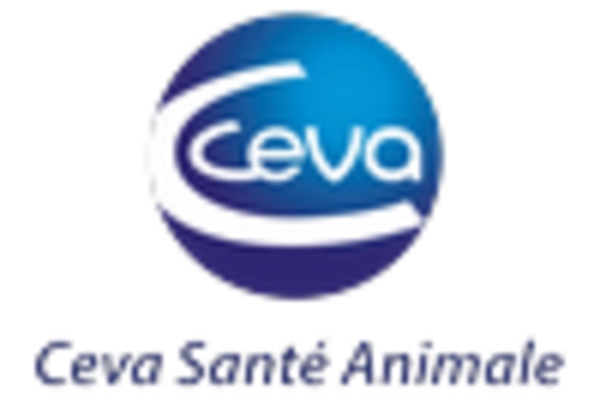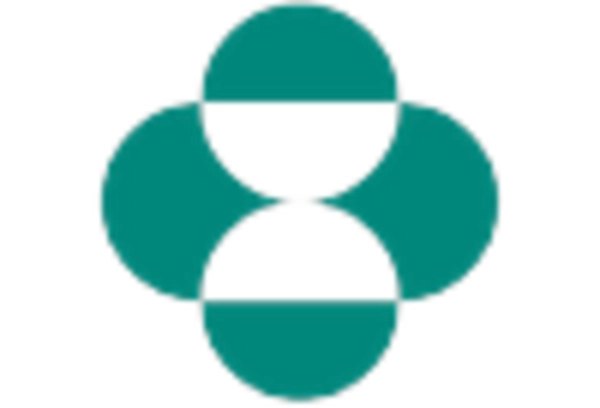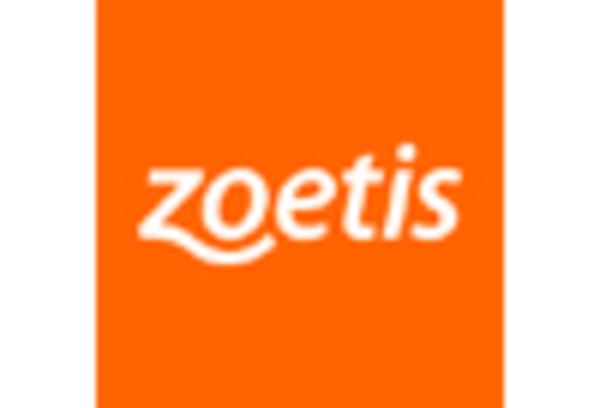Growth in Pet Insurance Coverage
The expansion of pet insurance coverage is contributing to the growth of the Animal Gastroesophageal Reflux Disease Market. As more pet owners opt for insurance plans that cover veterinary expenses, they are more likely to seek treatment for conditions such as gastroesophageal reflux disease. Data suggests that the pet insurance market has seen a steady increase, with a reported growth rate of around 20% annually. This trend indicates that financial barriers to treatment are diminishing, leading to increased veterinary visits and a higher demand for medications and therapies related to gastroesophageal reflux disease. Consequently, this growth in insurance coverage is poised to positively impact the market.
Pet Humanization and Dietary Trends
The pet humanization trend, characterized by pet owners treating their animals as family members, is influencing the Animal Gastroesophageal Reflux Disease Market. This trend has led to increased scrutiny of pet diets, with many owners opting for premium and specialized food products. Research indicates that dietary factors play a crucial role in managing gastroesophageal reflux disease, prompting owners to seek out foods that promote digestive health. As the market for specialized pet foods continues to grow, it is likely to drive demand for related treatments and interventions, thereby contributing to the overall expansion of the Animal Gastroesophageal Reflux Disease Market.
Advancements in Diagnostic Techniques
Recent advancements in diagnostic techniques for gastroesophageal reflux disease are likely to enhance the Animal Gastroesophageal Reflux Disease Market. Innovations such as endoscopy and pH monitoring have improved the accuracy of diagnoses, allowing veterinarians to identify the condition more effectively. The introduction of these technologies has been associated with a notable increase in the number of diagnosed cases, which, in turn, drives the demand for specialized treatments. As veterinary practices adopt these advanced diagnostic tools, the market is expected to expand, reflecting a growing recognition of the importance of early detection and intervention in managing this condition.
Rising Demand for Specialized Veterinary Care
The increasing demand for specialized veterinary care is a significant driver of the Animal Gastroesophageal Reflux Disease Market. Pet owners are increasingly seeking out veterinary specialists for conditions that require advanced knowledge and treatment options. This trend is reflected in the growing number of veterinary specialists, including those focused on gastroenterology. As more veterinarians pursue specialization, the availability of targeted treatments for gastroesophageal reflux disease is likely to expand. This shift towards specialized care not only enhances treatment outcomes but also stimulates market growth as pet owners invest in higher-quality veterinary services.
Increasing Incidence of Gastroesophageal Reflux Disease in Animals
The rising incidence of gastroesophageal reflux disease among pets appears to be a primary driver for the Animal Gastroesophageal Reflux Disease Market. Studies indicate that conditions such as obesity and dietary indiscretion contribute to this increase. For instance, a survey conducted by veterinary associations suggests that approximately 15% of dogs and 10% of cats may experience symptoms related to this condition. As awareness grows, pet owners are more likely to seek veterinary care, thereby propelling the demand for diagnostic and therapeutic options within the market. This trend indicates a potential for growth in the Animal Gastroesophageal Reflux Disease Market, as more treatments and preventive measures are developed to address this health issue.


















Leave a Comment